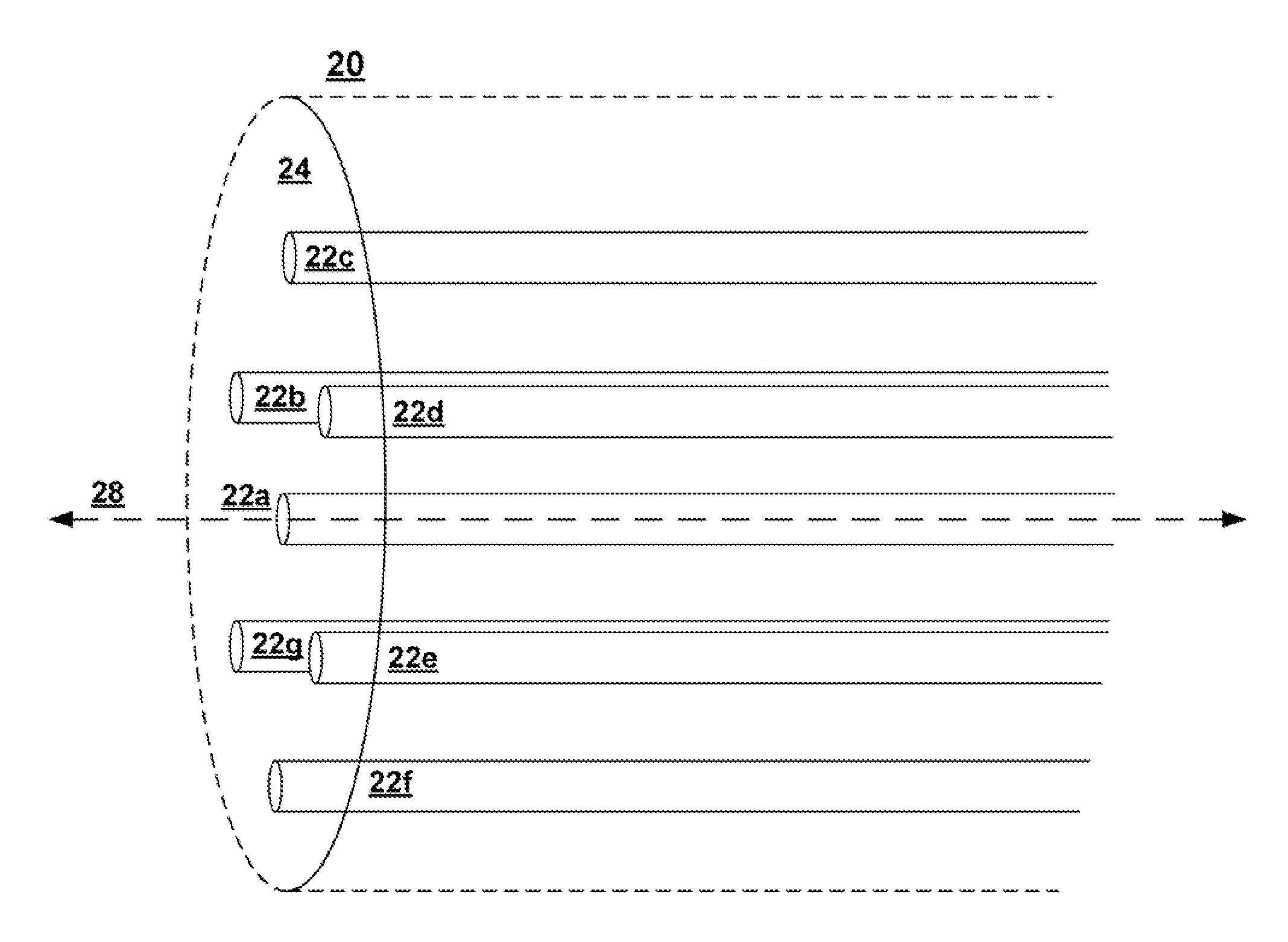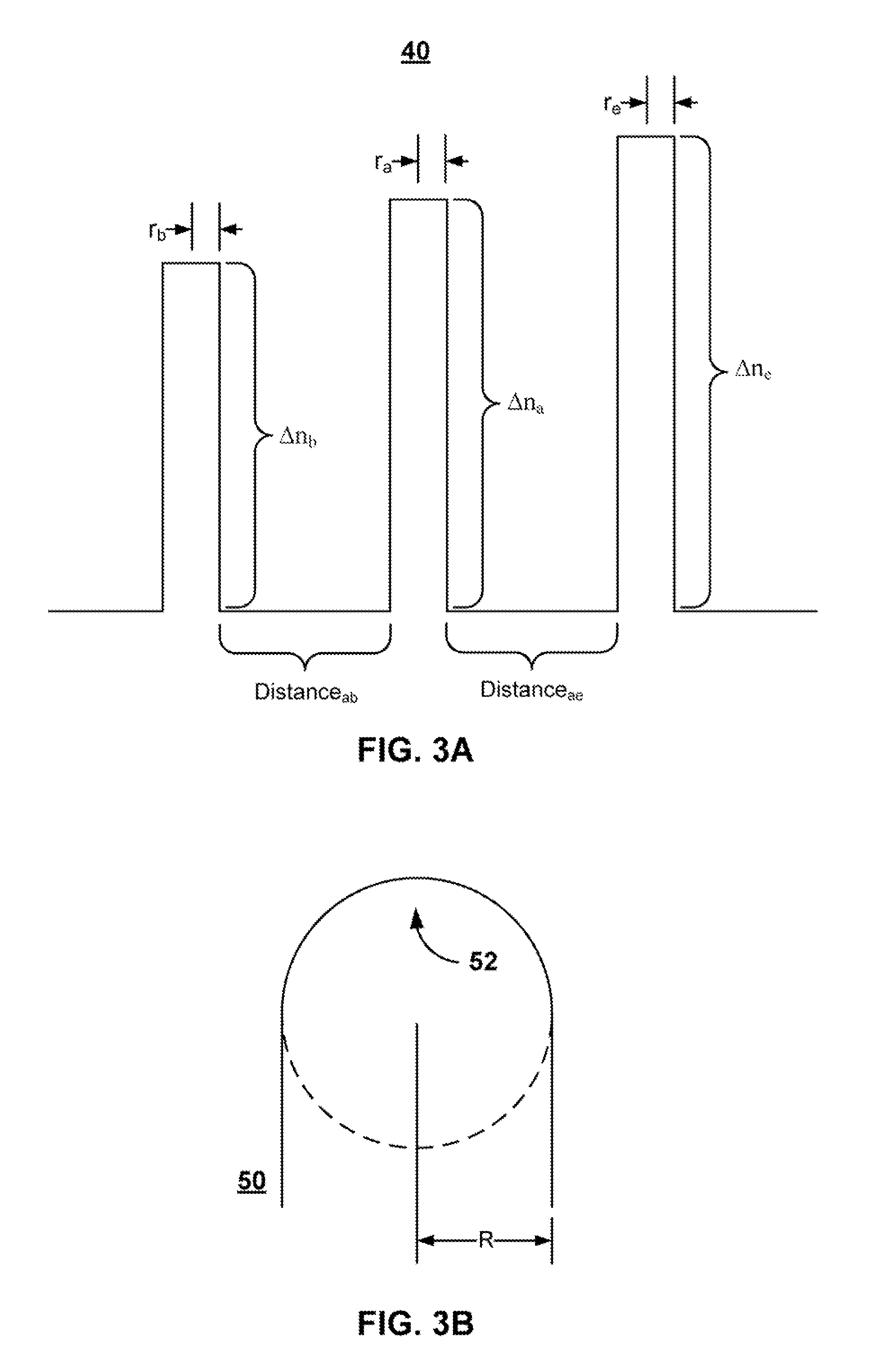Techniques for Manipulating Crosstalk in Multicore Fibers
a multicore fiber and transmission technology, applied in the field of optical fiber devices and methods, can solve the problems of unadjusted fiber spin, unfavorable cable practicality over a useful length, and inability to achieve the unbent state in a practical cabl
- Summary
- Abstract
- Description
- Claims
- Application Information
AI Technical Summary
Benefits of technology
Problems solved by technology
Method used
Image
Examples
Embodiment Construction
[0020]Aspects of the present invention provide techniques for reducing crosstalk in a multi-core fiber (MCF) design. As discussed below, the described techniques and fibers result from the understanding that crosstalk in an MCF occurs, in significant part, because of resonant coupling between individual cores in the MCF. Thus understood, it is possible to properly analyze how bends in an MCF fiber contribute to crosstalk, and how twists in the fiber can be used in conjunction with bends to control the overall amount of crosstalk.
[0021]The following discussion is divided into the following sections:[0022]1. Introduction—Exemplary MCF and Overview of Techniques[0023]2. Coupled-Model Model[0024]3. Skewed-Core Fiber Designs[0025]4. Spinning of Multicore Fiber[0026]5. Reduction of Crosstalk in Multicore Fibers[0027]6. Variable Spin Rates[0028]7. Bend-Induced Phase Matching[0029]8. Analytical Approach[0030]9. Results for Stationary Random-Bend Processes[0031]10. General Technique[0032]11....
PUM
 Login to View More
Login to View More Abstract
Description
Claims
Application Information
 Login to View More
Login to View More - R&D
- Intellectual Property
- Life Sciences
- Materials
- Tech Scout
- Unparalleled Data Quality
- Higher Quality Content
- 60% Fewer Hallucinations
Browse by: Latest US Patents, China's latest patents, Technical Efficacy Thesaurus, Application Domain, Technology Topic, Popular Technical Reports.
© 2025 PatSnap. All rights reserved.Legal|Privacy policy|Modern Slavery Act Transparency Statement|Sitemap|About US| Contact US: help@patsnap.com



